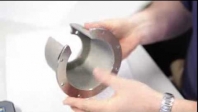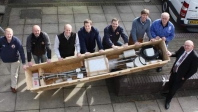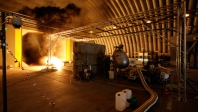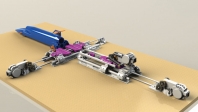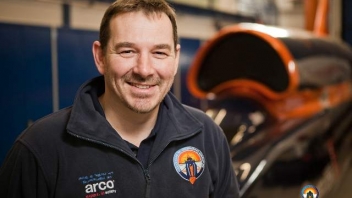
My first engineering connection was working with my Granddad in his shed when I was primary school age. He was extremely resourceful and would make all kinds of things for his car and boat, and would repair all the household appliances if they broke down. His background was manufacturing engineering and he had worked on the Spitfire production line. In fact the first Airfix model I made in his shed was a Spitfire, and over the years I progressed up the ranks with Lego, Meccano, Scalextric and the Tamia Grasshopper RC car. These practical ‘toys’ were very engaging and I believe they were fundamental to me becoming an engineer.
Engineering for me began in a mechanical workshop where I developed practical manufacturing skills using mills, lathes, precision grinding and welding & fabrication tools. In parallel to this I was able to study through the BTEC route on a First Diploma, a National Diploma course and went on to achieve an HNC in Mechanical Engineering. I then worked in Academia in experimental Engineering before moving into Industry.
My first Industrial job was in development engineering, and I worked on projects like the Rolls Royce Trent 900 engine developing new technologies for turbine blade manufacturing. After that I remained in aerospace working on mainly civil aircraft programs, including the Airbus A380, where I won Airbus Awards for Innovation and Awards for Engineering Excellence. I continued to work mainly in the field of aero-structures and advanced manufacturing engineering looking at new methods, tools (M&T), materials and processes (M&P) for next generation aircraft, space transport, satellites and helicopters, and co-authored several patents in M&P. During this time I worked on advanced materials & processes and build and led many academic and industrial collaboration projects to develop new engineering and manufacturing concepts. I worked on the Integrated Wing Program (~£35M), and the Next Generation Composite Wing program (~£100M). More recently I led an Innovation & Technology initiative with the South West Regional Development Agency (SWRDA) to set up an industrial advanced manufacturing centre called ‘CALM’. I designed it based on an Open Innovation model to diffuse technology knowledge normally silo’d in industry, by pulling it back through Academia, stimulating new research, and pushing it out to SME’s for cross-sector adoption. In essence it bridges early innovators with early adopters (see Moore’s ‘Crossing the Chasm’ model).
A lot of these materials and processes could address some of the environmental challenges we face in the future, by using ‘smart’ materials with embedded sensors, tailored flexural and stiffness properties in single structural elements, auxetic materials, future nano-enabled composites and more excitingly, bionic and biomimetics; these are just some of the technologies being developed today and they will drive design and analysis capabilities beyond current state of the art. It’s a good job that processing power, design tools and non-linear Finite Element Analysis (FEA) are developing fast. In the future ‘the engineer’ will need to have a hybrid of materials, mechanical, biological and artistic talents!
I will be working on the manufacturing, assembly and integration phase of the project, and also supporting the educational team with providing technology briefings to help explain what we doing. The project brings together all the engineering knowledge and skills from making plastic Airfix models in a shed to designing and building advanced composite airliners on a global collaborative platform. Working in the team, and with all the Academic and Industrial collaborations which underpin the Bloodhound program, is a great demonstration that Britain’s Got (Science & Engineering) Talent!

